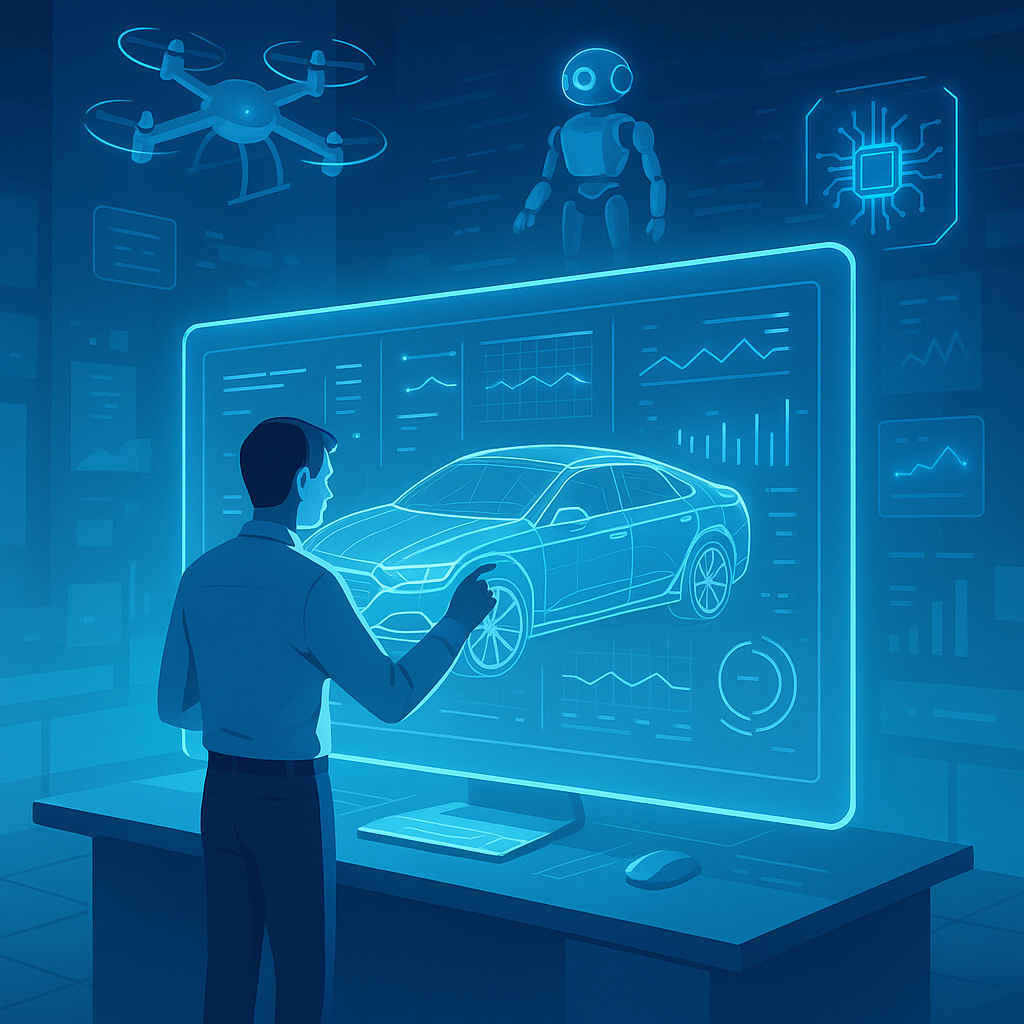322
🔍 What Is Virtual Prototyping?
Virtual prototyping involves building and evaluating a product before its physical creation. It employs 3D models and simulations to assess how an item will function, appear, and react in various scenarios.
This approach saves time, reduces costs, and conserves materials because you don’t need to produce a tangible prototype each time you make an adjustment.
💻 How Does It Work?
Engineers rely on specialized software such as:
- CAD (Computer-Aided Design) to build 3D forms
- Simulation tools to examine factors like temperature, force, and motion
- Digital twins to replicate real-world objects in digital space
These tools help you grasp:
- Will the design hold up when stressed?
- Does it have the correct dimensions or form?
- How will it function in actual use?
🏭 Where Do People Use It?
Virtual prototyping sees use in various industries:
- 🚗 Car makers use it to examine how vehicles behave in collisions or wind tunnels
- ✈️ Aircraft manufacturers use it to verify if components can withstand air pressure
- 🏢 Architects use it to plan buildings before they start construction
- 🧬 Healthcare uses it to create tools and medical devices
- 📱 Electronics firms use it to develop gadgets and check their operation
🎯 What Makes It Valuable?
| ✅ Benefit | 💬 What It Means |
|---|---|
| 💸 Saves Money | No need to build costly test products |
| ⏱️ Saves Time | Faster design and fewer mistakes |
| 🔍 Better Testing | Can test in many conditions like heat or speed |
| 🌍 Eco-Friendly | Less material is wasted |
| 📏 More Accurate | You get exact results and can fix problems early |
📝 In Simple Words
“Computer simulations let engineers and designers try out their ideas before they build anything real. This saves time, money, and brainpower. From cars to buildings to medical tools, this tech helps create better stuff with less junk left over.”
